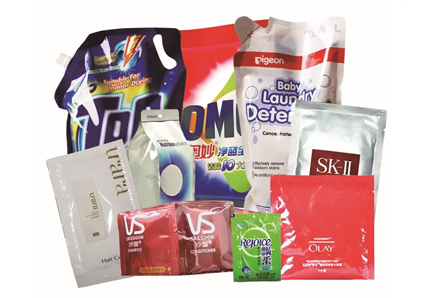en
Soft packaging uses a variety of raw materials, among which various films account for a significant proportion. Climate-induced temperature changes can affect the properties of these films differently, leading to quality issues in soft packaging products. This article focuses on analyzing the impact of weather temperature changes on product quality and the corresponding control points.
Regardless of the type of film, the principle involves heating plastic particles until they melt into a fluid, which is then extruded through a screw and formed. Different film materials are processed differently based on the material, formula, and application, leading to variations in the extruder, die, and cooling method. Common materials like printed BOPET, BOPP, and BOPA undergo secondary stretching to meet application demands, compromising their heat-sealing properties to create rigid films. Thus, the basic principle of forming plastic materials involves melting the plastic particles and processing them according to the final application, with only the processing paths differing.
The principle of film production involves heating plastic particles until they melt into a fluid, which is then extruded and cooled to form. Whether it’s blown upwards or downwards, cast, water-cooled, or air-cooled, the processing method differs, but the material’s texture remains consistent.
The production path for plastic film materials: Extrusion → Molding → Cooling → Setting → Cutting → Finished Product.
Soft packaging typically uses gravure printing, where ink is dried with hot air to form a color film. The ink is rapidly dried with hot air and simultaneously cooled with a water-cooled roller; PE film materials generally require preheating to prevent shrinkage and maintain overprint accuracy.
The production path for printing: Original → Color Separation → Plate Making → Plate Mounting → Ink Mixing → Printing → Ink Drying → Rewinding into Finished Product.

Lamination production path: Base Film → Gluing → Drying (Dry Lamination) → Bottom Film → Lamination → Cooling and Setting → Rewinding into Finished Product.
Dry Lamination: After applying glue to the base film, it is dried in an oven, and the solvent in the glue is evaporated before laminating with the bottom film. The process is completed by heating and cooling rollers to set the lamination.
Solventless: The base film is directly laminated with the bottom film after applying glue. The entire glue supply system (glue tank, glue pump, mixing pipeline), gluing system (glue trough, transfer roller), and lamination roller need to be heated.
Extrusion Lamination: Similar to the film-making process, the granules are melted into a film and directly coated onto the base material, involving heating, extrusion, and cooling processes.
The adhesive is heated to a constant temperature to allow cross-linking and curing, bonding different materials together.
The sealing bar is heated, and through temperature and pressure, the film materials are melted and bonded together, forming a seal.
From the description of the production process, it’s clear that temperature is a critical factor. Any deviation can lead to defects and quality accidents. Therefore, when setting process standards, SOP documents should be created based on actual production conditions and strictly implemented.
However, even when following SOPs, issues can still arise due to seasonal climate changes affecting temperature and humidity, which in turn impact production. These changes can lead to a range of problems, such as reduced transparency, increased friction, ink drying on the plate, solvent retention, bag sticking, and poor heat sealing, among others.
To address these issues, it’s essential to understand that while the production environment may seem unchanged, temperature and humidity variations significantly affect material properties and processing outcomes. Adjusting for these variations in advance can help mitigate quality issues and ensure consistent product quality despite environmental changes.
This is the first one.